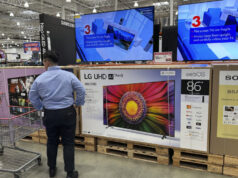The term “country club” has long conjured images of elegant golf courses, formal dining rooms, and a milieu of exclusivity where the affluent congregate. However, as the tastes of the modern family evolve and the line between work, leisure, and community begins to blur, the country club is at a crossroads. 88 Tactical will explore how country clubs have reimagined themselves and how this evolution can serve as a blueprint for entrepreneurs looking to redefine family entertainment centers.
The Tradition of Exclusivity
Historically, country clubs served as retreats for the elite—a place to socialize, network, and play. They typically offered activities centered around golf and other traditional forms of leisure, creating a sanctuary of exclusivity. However, this model is no longer sustainable in an era where diversity, accessibility, and multifunctional spaces are highly valued.
Family entertainment preferences also significantly contribute to the shift away from the traditional country club model. Modern families, whether millennials with young children, single-parent households, or baby boomers looking for an active retirement, seek more diverse experiences in their leisure time. The rigid structures of yesteryear’s country clubs do not align with the fluid needs of the 21st-century family.
A New Era of Inclusivity
For modern country clubs to thrive, they must become inclusive destinations that offer something for everyone. This inclusivity extends beyond membership to a diverse range of entertainment options. Country clubs now incorporate wellness centers, family-friendly pools, and innovative dining experiences that cater to various dietary needs and preferred culinary adventures.
Successful country clubs have recognized the importance of creating community among their members. They host various events, from themed parties to charity functions, which serve as social hubs for members of all ages. This approach strengthens community ties and fosters a loyal member base.
Seizing the Business Opportunity
Entrepreneurs have a unique opportunity to redefine the concept of a family entertainment center by borrowing from the revitalized country club model. By doing so, they can tap into the demand for inclusive, community-focused, and multigenerational leisure spaces.
This strategic shift can be particularly attractive to investors and business owners, as it provides a differentiated concept in a market often saturated with homogeneous offerings. Creating a modern country club is not just about launching a business—it’s about cultivating a multifaceted lifestyle destination that resonates with the core values of your target demographic.
Key to Success: Modernizing the Country Club
Several key components must be considered to modernize the concept of the country club. Diversifying amenities to include year-round entertainment, reimagining dining experiences with a focus on quality and variety, and implementing community engagement programs are all crucial elements to consider:
Diverse Activities
A successful modern country club offers a range of activities that appeal to different interests and abilities. This can include sports facilities beyond golf, such as tennis courts, soccer fields, and fitness centers. Wellness programs, arts and crafts classes, and educational seminars can round out the entertainment slate.
High-Quality Dining
Gone are the days when country club dining was synonymous with stuffy formality. The modern club must offer various dining options that cater to the tastes of its members. This can range from casual cafes and family-style eateries to high-end restaurants with farm-to-table menus. Quality, consistency, and customer service should be top priorities in the dining experience, ensuring that members look forward to every meal at the club.
Community Engagement
Creating a thriving community atmosphere is key to the redefined country club’s success. Regular social events, such as holiday celebrations, live music nights, and movie screenings, bring people together and foster a sense of belonging. Clubs can also engage in local charity work, organize volunteer opportunities, and support community initiatives further to integrate their establishment into the fabric of local life.
Strategies for Entering the Market
A thorough understanding of the market and a solid strategy are essential for aspiring entrepreneurs to enter the modern country club sector. This involves conducting extensive market research to identify the needs and preferences of your target demographic and developing a robust financial plan to support the initial investment and long-term sustainability of the venture.
Additionally, crafting a marketing strategy that effectively communicates the value proposition of the modern country club is crucial. This involves employing digital marketing, social media, and local advertising to reach potential members. Highlighting the unique aspects of the club, such as its diverse amenities or commitment to community, can be powerful selling points.
Final Thoughts
The traditional country club that once symbolized exclusivity is now becoming a beacon of vibrant, inclusive family entertainment. Entrepreneurs have the chance to redefine leisure spaces to cater to the dynamic lifestyles of today’s families. By learning from the successful transitions of country clubs and integrating the key strategies outlined in this post from 88 Tactical, business owners can create multifaceted destinations that resonate with the diverse members of their communities.














